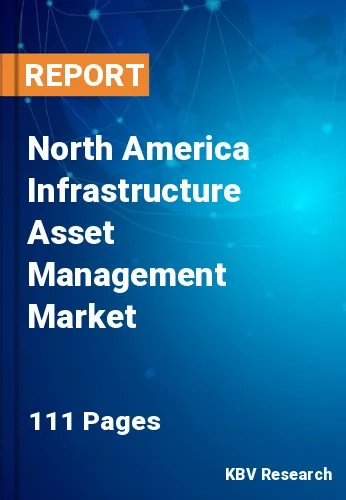The North America Infrastructure Asset Management Market would witness market growth of 8.5% CAGR during the forecast period (2023-2030).
The Internet of Things (IoT) technology revolutionizes asset management by providing real-time data on asset conditions. Sensors embedded in infrastructure assets can monitor structural integrity, performance, and environmental factors, allowing for predictive maintenance and data-driven decision-making. AI and machine learning algorithms analyze vast amounts of asset data, identifying patterns and trends that human operators might miss. This technology helps predict failures, optimize maintenance schedules, and improve asset performance. Geospatial Information Systems (GIS) technology combines geographic and asset data, providing a spatial context for asset management. It helps in location-based decision-making, such as optimizing transportation routes or analyzing the impact of infrastructure changes on the environment.
Resilience and disaster preparedness strategies help identify and mitigate risks associated with infrastructure assets. Asset managers can lower the risk of damage and disruption by proactively evaluating vulnerabilities and possible threats. In a disaster or emergency, resilient infrastructure assets are designed to minimize downtime. Quick recovery and operational continuity are essential for maintaining critical services and reducing economic losses. Infrastructure asset management focusing on resilience ensures the safety and welfare of the public. Assets that can withstand disasters help protect lives and property, a critical responsibility for asset owners and operators. Disaster preparedness often involves modernizing infrastructure assets to make them more resilient. This can increase investment in asset rehabilitation and replacement, driving market growth.
Asset management in the U.S. increasingly incorporates advanced technologies, such as IoT sensors, AI, and machine learning, to optimize asset performance and maintenance. In the U.S., asset management involves planning for the entire lifecycle of assets, from acquisition and installation to maintenance, rehabilitation, and eventual disposal or replacement. In the U.S., asset management systems often include technology for tracking assets in real time. This is crucial for monitoring performance and location. The factors mentioned above will drive the regional market growth.
The US market dominated the North America Market by Country in 2022 and would continue to be a dominant market till 2030; thereby, achieving a market value of $18,011.9 million by 2030. The Canada market is registering a CAGR of 11% during (2023 - 2030). Additionally, The Mexico market would showcase a CAGR of 10% during (2023 - 2030).
Based on Component, the market is segmented into Services (Operational Asset Management, Strategic Asset Management, Tactical Asset Management), and Solution. Based on Application, the market is segmented into Transportation, Energy Infrastructure, Water & Waste Infrastructure, Critical Infrastructure, Mining, and Others. Based on countries, the market is segmented into U.S., Mexico, Canada, and Rest of North America.
Free Valuable Insights: The Infrastructure Asset Management Market is Predict to reach $73.3 Billion by 2030, at a CAGR of 9.1%
The market research report covers the analysis of key stake holders of the market. Key companies profiled in the report include Golder Associates (WSP Global Inc.), Tetra Laval International S.A, Clarios, LLC. (Brookfield Business Partners), Macquarie Group Limited, SIMCO Technologies, Pitney Bowes, Inc., SNC-Lavalin Group, Inc., Aabasoft Technologies Pvt. Ltd., ThomasLloyd Global Asset Management GmbH, EverStream Capital Management.
By Component
By Application
By Country
Our team of dedicated experts can provide you with attractive expansion opportunities for your business.

